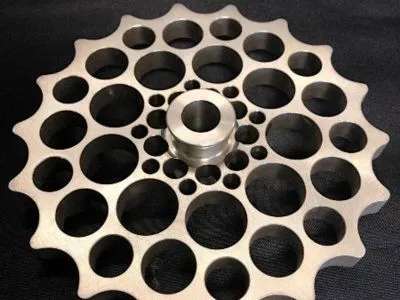 Precision machining plays a critical role in modern manufacturing, especially when it comes to achieving extremely tight tolerances. These tolerances define how accurately a part can be produced and are essential in industries where even the smallest deviation can lead to failure.
Precision machining plays a critical role in modern manufacturing, especially when it comes to achieving extremely tight tolerances. These tolerances define how accurately a part can be produced and are essential in industries where even the smallest deviation can lead to failure.
But what defines the "tightest" tolerance? In most cases, it's measured in microns or thousandths of an inch. While general machining operations typically handle tolerances of +/- 0.002 to 0.005 inches, high-precision applications push these limits far beyond. Some advanced machine shops can maintain tolerances as tight as 1 micron or less—less than the width of a human hair.
Microns and Thousandths of an Inch
Tolerances are commonly expressed in either microns (μm) or thousandths of an inch (0.001"). For example, a tolerance of 10 microns is equivalent to about 0.0004 inches. The tighter the tolerance, the more challenging the machining process becomes. Achieving such precision requires not only high-quality equipment but also skilled technicians and precise control over environmental factors like temperature and vibration.
Medical Device Manufacturing
The medical industry demands some of the highest levels of precision, especially when it comes to implants, surgical tools, and diagnostic devices. Even the slightest variation in dimensions could affect the performance of a device, potentially endangering a patient’s health. For instance, parts used in laser eye surgery must be manufactured with extreme accuracy, often within 1 to 3 microns. This level of precision ensures that components fit perfectly and function reliably in critical medical applications.
Aerospace Component Tolerances
Aerospace engineering is another field where tight tolerances are non-negotiable. Components used in aircraft engines, spacecraft, and navigation systems require precise machining to ensure safety, efficiency, and performance. Tolerances as tight as 2 microns or less are common in this industry. These minute measurements allow for optimal weight distribution, reduced friction, and enhanced durability—factors that are crucial in high-stakes environments like space travel or commercial aviation.
The Limits of Modern Machining
While sub-micron tolerances are possible, they come with significant challenges. Thermal expansion, tool wear, and machine vibrations all affect the final result. Even the most advanced CNC machines have limitations when it comes to maintaining ultra-tight tolerances over time. That’s why many manufacturers consider 2 to 5 microns as the practical limit for consistent production. However, for specialized applications, dedicated equipment and refined processes can push these boundaries further.
Why Choose Cheetah Precision Machining?
Cheetah Precision Machining specializes in delivering high-accuracy parts across industries that demand precision, including aerospace, medical, and defense. With state-of-the-art 5-axis milling technology, rigorous quality control, and decades of experience, we’re equipped to handle even the most demanding tolerance requirements. Whether you need prototypes, small batches, or large-scale production, our team ensures every component meets the highest standards of accuracy and reliability.
Contact us today at (651) 633-4566 to learn more about how we can help meet your precision machining needs. Let’s build something perfect, together.
Click to learn more about us.
 Precision machining plays a critical role in modern manufacturing, especially when it comes to achieving extremely tight tolerances. These tolerances define how accurately a part can be produced and are essential in industries where even the smallest deviation can lead to failure.
Precision machining plays a critical role in modern manufacturing, especially when it comes to achieving extremely tight tolerances. These tolerances define how accurately a part can be produced and are essential in industries where even the smallest deviation can lead to failure.